Impatiens
Impatiens {{{latin_name}}}
|
Balsam, Touch-me-not, Snapweed, Jewelweed, Busy Lizzie
| ||||||||||||||||||||||||||||||||||||||||
|---|---|---|---|---|---|---|---|---|---|---|---|---|---|---|---|---|---|---|---|---|---|---|---|---|---|---|---|---|---|---|---|---|---|---|---|---|---|---|---|---|---|
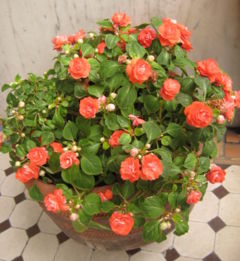
|
|
| |||||||||||||||||||||||||||||||||||||||
| |||||||||||||||||||||||||||||||||||||||||
There are hundreds of species of Impatiens, though four are much more commonly grown in gardens than the restsn. Most are annuals, or perennials treated as annualssn. They are grown for their flowers, which continue until frost. When the seed capsules are ripe, they explode upon being lightly touched, shooting little seeds around.sn
Four most commonly grown:
-
Impatiens walleriana may be the most popular bedding plant in Americasn.
-
Impatiens balsamina - Balsam
-
Impatiens sodenii - Poor Man's Rhododendron
-
Impatiens 'New Guinea' hybrids. Note darker leaves.
Cultivation
- Do you have cultivation info on this plant? Edit this section!
Propagation
- Do you have propagation info on this plant? Edit this section!
Pests and diseases
- Main article: List of impatiens diseases
Impatiens species are used as food plants by the larvae of some Lepidoptera species including Dot Moth.
Species

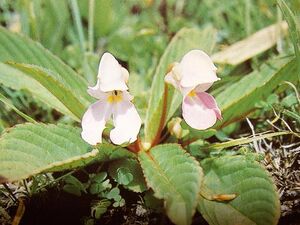
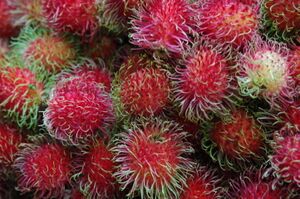
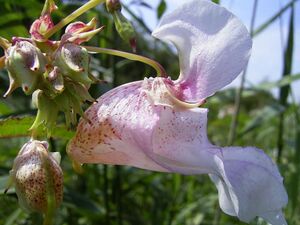
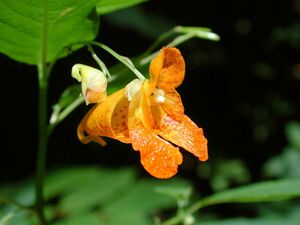
There are about 900-1000wp species of Impatiens, including:
Gallery
If you have a photo of this plant, please upload it! Plus, there may be other photos available for you to add.
-
Double flowered I. walleriana
-
photo 2
-
photo 3
References
- Standard Cyclopedia of Horticulture, by L. H. Bailey, MacMillan Co., 1963
External links
- w:Impatiens. Some of the material on this page may be from Wikipedia, under the Creative Commons license.
- Impatiens QR Code (Size 50, 100, 200, 500)





